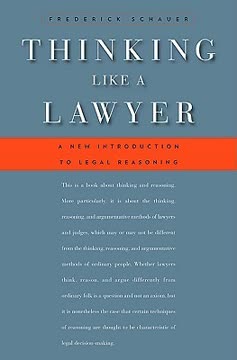Key Takeaways
1. Legal Reasoning: A Distinct Discipline?
Law schools aspire to teach their students how to think differently—differently from ordinary people, and differently from members of other professions.
Beyond Ordinary Reasoning. Law schools aim to cultivate a unique mode of thinking, distinct from general rationality or professional expertise. This "legal reasoning" involves specific techniques in argument and decision-making, setting lawyers apart from other professionals.
Skeptical Challenges. The distinctiveness of legal reasoning faces challenges from Legal Realists, political scientists, psychologists, and historians. These critics argue that lawyers and judges are influenced by personal biases, policy preferences, and psychological shortcomings, questioning the actual impact of specialized legal training.
A Contested Hypothesis. The existence of legal reasoning remains a contested hypothesis, requiring empirical validation. While lawyers share reasoning characteristics with others, the concentration and dominance of specific methods within the legal system may justify the claim that "thinking like a lawyer" is a real and important skill.
2. Rules: The Backbone of Legal Decisions
Central to what rules are and how they function is that what the rule says is the crucial factor, even if what the rule says seems wrong or inconsistent with the background justifications lying behind the rule, and even if following what the rule says produces a bad result on some particular occasion.
Rules and Rationales. Every rule has a background justification or rationale, which it is designed to serve. However, the rule itself, not the rationale, carries the force of law. This can lead to seemingly unjust outcomes when a literal application of the rule conflicts with its underlying purpose.
Core vs. Fringe. Rules have a clear core of settled meaning and a fuzzy edge or penumbra where interpretation is required. Litigated cases disproportionately involve the penumbra, leading to a skewed perception of legal rules as inherently ambiguous.
Generality and Formality. Rules are general, applying to a wide range of cases, and this generality inevitably leads to over- and underinclusiveness. The formality of law prioritizes the outcome dictated by the words of a rule, even when it seems unfair in a particular case.
3. Precedent: Learning from the Legal Past
The core principle of decision-making according to precedent is that courts should follow previous decisions—that they should give the same answers to legal questions that higher or earlier courts have given in the past.
Vertical and Horizontal Precedent. Vertical precedent requires lower courts to follow decisions of higher courts within their jurisdiction. Horizontal precedent, or stare decisis, obligates courts to follow their own prior decisions.
Following vs. Learning. Reasoning from precedent involves following a previous decision solely because of its status as a precedent, not because the instant court is persuaded by its reasoning. This can lead to decisions that the court believes are incorrect.
Justifications for Precedent. Vertical precedent is justified by hierarchical authority. Horizontal precedent promotes stability, predictability, and efficiency in the legal system.
4. Authority: The Weight of Legal Sources
When courts are constrained by precedent, they are obliged to follow a precedent not only when they think it correct, but even when they think it incorrect.
Content-Independence. Authority in law is content-independent, meaning that legal subjects are expected to obey rules and precedents regardless of their own opinions of their wisdom. The source or status of the rule is what matters, not its substantive content.
Optional vs. Mandatory Authorities. Mandatory authorities, such as binding precedents, must be followed. Optional authorities, such as persuasive precedents or secondary sources, may be considered but are not binding.
Prohibited Authorities. Certain sources, such as overruled cases or non-legal materials, may be prohibited as authorities. This reflects a judgment about which sources are legitimate for legal reasoning.
5. Analogy: Finding Similarity in Difference
In seeking to demonstrate to the hapless student or the struggling advocate how the best legal outcome may be something other than the best outcome for the immediate controversy, the prototypical Socratic interrogation embodies law’s pervasive willingness to reach a result differing from the one that is optimally fair or maximally wise, all things considered, in the particular case.
Drawing Connections. Analogical reasoning involves arguing that a current situation is similar to a past one and should be treated in the same way. This requires identifying relevant similarities between the source and target cases.
Not Precedent. Analogical reasoning differs from following precedent, which involves an obligation to follow a prior decision regardless of whether the instant court agrees with it. Analogies are chosen for their persuasive power, while precedents are binding due to their authority.
Skeptical View. Some argue that analogical reasoning is simply a disguised form of rule-based reasoning, with the court choosing a rule that determines the relevance of similarities. This view questions the distinctiveness of analogical reasoning.
6. Common Law: Evolving Through Cases
It is the merit of the common law that it decides the case first and determines the principle afterwards.
Judge-Made Law. The common law is a legal system in which law is created and developed through judicial decisions in particular disputes. This contrasts with civil law systems, which rely on comprehensive codes.
Flexibility and Adaptation. Common-law rules are defeasible, meaning they can be modified or overturned in light of new circumstances. This allows the common law to adapt to changing social conditions.
The Role of Equity. Equity, originally a system of individualized justice administered by the chancellor, has become integrated into the common law, providing flexibility and fairness.
7. Realism: The Skeptical Eye on Legal Reasoning
The skeptical position that distinctively legal reasoning is unusual rather than typical in actual legal practice may in the final analysis be sound, but the premise of this book is not only that legal reasoning does exist, even if it is not all that lawyers and judges do, but also that its actual existence is sufficiently widespread to say that there is, descriptively, something we can accurately characterize as “thinking like a lawyer.”
Challenging Formalism. Legal Realists questioned the traditional view that legal doctrine dictates judicial decisions. They argued that judges are influenced by personal biases, policy preferences, and other non-legal factors.
Predicting Outcomes. Realists emphasized the importance of predicting what courts will actually do, rather than focusing solely on formal legal rules. They urged empirical research to identify the "real" determinants of judicial decisions.
The Limits of Doctrine. Realists argued that legal doctrine is often indeterminate, allowing judges to justify a wide range of outcomes. This challenges the idea that legal reasoning is a neutral and objective process.
8. Statutory Interpretation: Deciphering Legislative Intent
In seeking to demonstrate to the hapless student or the struggling advocate how the best legal outcome may be something other than the best outcome for the immediate controversy, the prototypical Socratic interrogation embodies law’s pervasive willingness to reach a result differing from the one that is optimally fair or maximally wise, all things considered, in the particular case.
The Primacy of Text. Statutory interpretation typically begins with the enacted words of the statute itself. However, the question of whether the text is the only thing that matters is at the center of most controversies about statutory interpretation.
Indeterminacy and Supplementation. When the text is unclear, judges must look beyond the statutory language to sources such as legislative history, statutory purpose, or broader principles of justice.
The Canons of Construction. Canons of statutory construction are guidelines for interpreting statutes, but they are often contradictory and may not provide clear answers.
9. Judicial Opinions: Reasons and Rulings
The causes and consequences of judicial opinions are ones that are vitally important to lawyers and judges, and that law schools must teach their students.
Explaining Decisions. Judicial opinions are explanations by judges of the reasoning that led them to a particular conclusion. They provide the facts, procedural history, relevant law, and application of law to facts.
Holding vs. Dicta. The holding of a case is the legal rule that determines the outcome, while dicta are statements that are not strictly necessary to the decision. The distinction between holding and dicta is often contested.
The Declining Frequency of Opinions. Due to increasing caseloads, appellate courts are issuing fewer opinions, particularly in easy cases. This raises questions about transparency and the guidance function of judicial opinions.
10. Rules vs. Standards: Balancing Precision and Flexibility
It is better saith the Law to suffer a mischiefe (that is particular to one) than an inconvenience that may prejudice many.
Managing Discretion. Rules and standards represent different points on a continuum of precision and vagueness. Rules constrain discretion, while standards grant it.
Stability and Flexibility. Rules promote stability and predictability, while standards allow for flexibility and individualized justice. The choice between rules and standards involves a tradeoff between these competing values.
Allocating Authority. The choice between rules and standards also involves allocating decision-making authority between the present and the future. Rules make decisions now, while standards defer decisions to future decision-makers.
Last updated:
FAQ
1. What is Thinking Like a Lawyer by Frederick Schauer about?
- Exploration of legal reasoning: The book provides a comprehensive introduction to the distinctive methods of legal reasoning used by lawyers and judges.
- Key legal concepts: It covers rules, precedents, authority, analogy, statutory interpretation, and the balance between rules and standards.
- Educational focus: Designed for beginning law students, it abstracts legal reasoning from specific subjects to explain the general logic of legal thought.
- Critical examination: Schauer questions whether legal reasoning is truly unique and analyzes its formal aspects and practical implications.
2. Why should I read Thinking Like a Lawyer by Frederick Schauer?
- Understand legal thinking: The book demystifies how lawyers and judges approach problems, make arguments, and reach decisions.
- Foundational for law students: It is especially valuable for those entering law school or anyone interested in the legal profession.
- Insight into legal distinctiveness: Schauer addresses whether legal reasoning is different from ordinary reasoning and why that matters.
- Broader relevance: The book’s analysis of reasoning, rules, and authority is useful for anyone interested in structured decision-making.
3. What are the key takeaways from Thinking Like a Lawyer by Frederick Schauer?
- Legal reasoning is distinctive: Certain methods, such as reliance on precedent and formal rules, are more concentrated in law than in other fields.
- Rules and standards: Understanding the difference between precise rules and flexible standards is crucial for legal analysis.
- Precedent and authority: Legal decisions are often guided by past cases and authoritative sources, not just by logic or policy.
- Limits of legal doctrine: Legal Realism challenges the idea that doctrine alone determines outcomes, highlighting the influence of judges’ beliefs and external factors.
4. What are the best quotes from Thinking Like a Lawyer by Frederick Schauer and what do they mean?
- “Law is a culture of rules.” This highlights the centrality of rules in legal reasoning and the legal profession’s commitment to following them.
- “Precedent is not just analogy; it is constraint.” Schauer emphasizes that precedent binds courts, limiting their discretion beyond mere persuasive comparison.
- “Legal reasoning is not just common sense dressed up in fancy language.” This quote underlines the book’s argument that legal thinking has unique features.
- “The law works itself pure.” Referring to the common law’s self-correcting nature, this phrase captures how legal rules evolve through case-by-case refinement.
5. How does Frederick Schauer define and explain legal rules in Thinking Like a Lawyer?
- Core and fringe: Legal rules have a clear core of settled meaning and a penumbra (fringe) of debatable applications, leading to easy and hard cases.
- Generality and formality: Rules are designed to apply broadly and uniformly, sometimes producing suboptimal results in specific situations.
- Rules vs. standards: Schauer distinguishes between precise, constraining rules and flexible, context-dependent standards, each with different implications for discretion.
- Language matters: The literal wording of rules often dictates outcomes, even when it conflicts with the rule’s underlying purpose.
6. What is the role of precedent in legal reasoning according to Thinking Like a Lawyer by Frederick Schauer?
- Binding and persuasive: Precedents can be mandatory (binding) or persuasive, guiding courts by reference to earlier decisions.
- Vertical and horizontal precedent: Lower courts must follow higher courts (vertical), and courts often adhere to their own past decisions (horizontal or stare decisis).
- Distinguishing holdings and dicta: Only the holding (legal rationale) of a case is binding, while dicta are non-binding but may be influential.
- Stability and adaptability: Precedent promotes legal certainty but also allows for incremental change as new cases refine existing rules.
7. How does Thinking Like a Lawyer by Frederick Schauer distinguish between precedent and analogy in legal reasoning?
- Precedent as constraint: Following precedent is a binding obligation, requiring courts to decide as before even if they disagree with the earlier decision.
- Analogy as persuasion: Analogies are used to highlight relevant similarities between cases, serving as persuasive but not binding arguments.
- Different mental processes: Precedent limits choice, while analogy involves selecting and emphasizing similarities to support a position.
- Practical implications: Understanding the difference helps lawyers craft arguments and predict judicial behavior.
8. What challenges exist in identifying relevant precedents and their holdings in Thinking Like a Lawyer by Frederick Schauer?
- No identical cases: Determining which past cases are relevant involves identifying legally material similarities, as no two cases are exactly alike.
- Ratio decidendi vs. dicta: The binding part of a precedent is its legal rationale (ratio decidendi), not all statements in the opinion.
- Complexity in application: Courts often dispute which parts of prior decisions are authoritative, leading to debates over distinguishing or overruling precedents.
- Selection effect: Hard cases at the fringe of rules are more likely to be litigated, shaping the development of precedent.
9. How does Thinking Like a Lawyer by Frederick Schauer describe the interpretation of statutes and the role of statutory text?
- Text as starting point: Statutory interpretation begins with the enacted words, which are crucial but not always decisive.
- Beyond the text: When statutory language is unclear or leads to absurd results, courts may consider legislative intent, purpose, or policy.
- Canons of construction: The book discusses interpretive canons (e.g., expressio unius, ejusdem generis) that help resolve ambiguities.
- Balancing certainty and justice: Courts must weigh the importance of following the text against achieving fair and sensible outcomes.
10. What is the difference between rules and standards in lawmaking and judicial decisions according to Thinking Like a Lawyer by Frederick Schauer?
- Rules are precise: Rules provide specific, clear directives that constrain discretion and promote predictability (e.g., speed limit 55).
- Standards are flexible: Standards are broad and context-dependent, allowing decision-makers to consider fairness and circumstances (e.g., drive prudently).
- Tradeoff: The choice between rules and standards involves balancing certainty and flexibility, with each approach having advantages and drawbacks.
- Strategic implications: Lawyers and judges must understand this balance to predict outcomes and craft effective arguments.
11. What challenges does Legal Realism pose to traditional legal reasoning in Thinking Like a Lawyer by Frederick Schauer?
- Extra-legal influences: Legal Realism argues that judges’ decisions are often shaped by personal beliefs, policy preferences, or psychological factors, not just legal doctrine.
- Law as prediction: Holmes’s “bad man” perspective suggests that law is about predicting what courts will do, not just following rules.
- Empirical focus: Realists advocate for empirical research to uncover what truly influences judicial decisions, challenging the constraining power of doctrine.
- Limits of formalism: Legal Realism questions whether legal reasoning alone determines outcomes, highlighting the complexity of judicial decision-making.
12. How does Thinking Like a Lawyer by Frederick Schauer explain the relationship between law and fact, and the role of burdens of proof and presumptions?
- Fact-law distinction: The legal system separates factual questions (what happened) from legal questions (what the law requires), though the line can be blurry.
- Adversarial fact-finding: Courts rely on parties to present evidence and on judges or juries to determine facts, differing from scientific or investigative methods.
- Burdens of proof: The burden of proof allocates the risk of error, specifying how certain a party must be to prevail (e.g., beyond a reasonable doubt).
- Presumptions and deference: Presumptions set default assumptions, shifting the burden to the opposing party, while deference reflects respect for the roles of lower courts or agencies.
Review Summary
Thinking Like a Lawyer receives mixed reviews, with an average rating of 3.88/5. Readers appreciate its comprehensive overview of legal reasoning, finding it useful for law students and those interested in the field. However, some criticize its density, repetitiveness, and occasional difficulty for non-lawyers. The book is praised for its clear explanations and examples, but criticized for potentially reinforcing systemic injustices. While some find it enlightening, others feel it lacks engagement or accessibility for a broader audience.
Similar Books
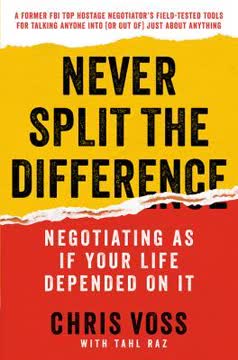
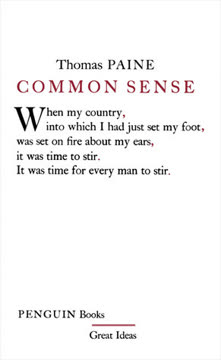

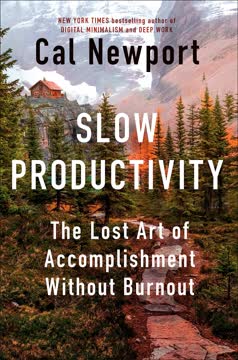


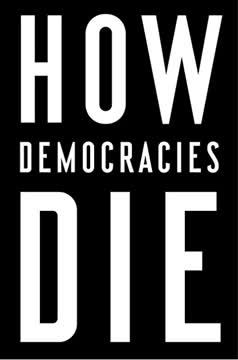


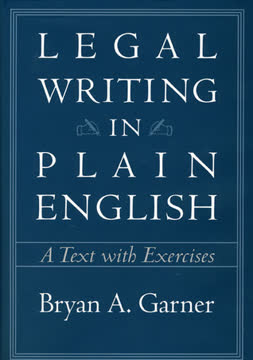
Download PDF
Download EPUB
.epub digital book format is ideal for reading ebooks on phones, tablets, and e-readers.
